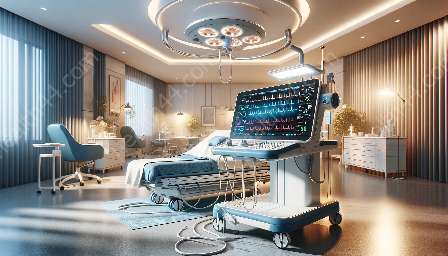An electrocardiograph machine, often referred to as an ECG or EKG machine, is an essential medical device used to monitor the electrical activity of the heart. This technology aids in diagnosing various heart conditions and is vital for patient care in medical facilities worldwide. Understanding the functions and components of electrocardiograph machines is crucial for healthcare professionals and anyone interested in medical devices and equipment.
Functions of Electrocardiograph Machines
The primary function of an electrocardiograph machine is to record the electrical signals produced by the heart. These signals are then displayed as a visual representation of the heart's rhythm and electrical activity. By analyzing the waveform patterns and intervals on the ECG graph, healthcare providers can gain valuable insights into the heart's health and detect abnormalities that may indicate cardiac disorders.
Key functions of electrocardiograph machines include:
- Signal Detection: Electrodes attached to the patient's skin detect the electrical impulses generated by the heart, which are then transmitted to the ECG machine for processing.
- Amplification and Filtering: The machine amplifies the weak electrical signals and filters out any interference or noise, ensuring the accuracy of the recorded data.
- Signal Display: The processed electrical signals are displayed as a graphical representation on the ECG monitor, allowing healthcare providers to interpret the waveforms and make diagnostic assessments.
- Data Analysis: ECG machines often include advanced algorithms and software for analyzing the recorded data, identifying abnormalities, and providing diagnostic interpretations.
- Reporting and Documentation: ECG machines provide the means to store and print the recorded ECG traces for medical records and further analysis. Digital ECG systems also allow for easy sharing and integration with electronic health records.
Components of Electrocardiograph Machines
Electrocardiograph machines consist of various components that work together to produce accurate and reliable ECG readings. These components include:
- Electrodes: Small, adhesive patches or suction cups that are attached to the patient's chest, limbs, and sometimes the torso to pick up and transmit the electrical signals from the heart to the ECG machine.
- Lead Wires: Conductive cables that connect the electrodes to the ECG machine, allowing the transmission of electrical signals for processing and display.
- ECG Machine Unit: The main unit of the electrocardiograph machine, containing the electronics, amplifiers, and processing components necessary for signal acquisition, amplification, and visualization.
- Display Monitor: The screen or monitor where the graphical representation of the heart's electrical activity is displayed, enabling healthcare providers to interpret the ECG readings in real time.
- Keyboard and Controls: Interface components that allow the user to input patient data, adjust settings, and control the operation of the ECG machine.
- Printer: Some electrocardiograph machines are equipped with built-in printers to produce hard copies of the recorded ECG traces for physical documentation and examination.
- Software and Data Storage: Modern ECG machines come with advanced software for data analysis, interpretation, and storage. They often have the capability to store ECG readings digitally and integrate with electronic medical records systems.
- Cardiac Monitors: ECG machines are often integrated with cardiac monitoring systems, allowing continuous real-time monitoring of a patient's heart rhythm and electrical activity.
- Defibrillators: The ECG readings obtained from an electrocardiograph machine are essential for determining the appropriate timing and energy levels for defibrillation in emergency cardiac situations.
- Pacemakers: ECG machines are used to diagnose and monitor the functionality of pacemakers, ensuring they are effectively regulating the patient's heart rhythm.
- Electronic Health Records: The digital capabilities of modern ECG machines enable the seamless integration of ECG data with electronic health records, streamlining the documentation and retrieval of patient information.
Compatibility with Other Medical Devices & Equipment
Electrocardiograph machines are crucial components of a broader ecosystem of medical devices and equipment used in cardiac care and diagnostics. They are compatible with various other devices and technologies, including:


